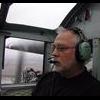Interior weight differences
-
Members Online
- robert7467
- 47U
- TangoTango
- TGreen
- jamesm
- buddy
- emiliocastelli
- Yan X
- Parker_Woodruff
- 1980Mooney
- kortopates
- RescueMunchkin
- 825JH
- dzeleski
- AH-1 Cobra Pilot
- kkelley85
- M20F
- Paul Thomas
- TheAv8r
- Nick Lombard
- swish
- Deb
- Ibra
- KSMooniac
- kaba
- Brian2034
- GeeBee
- IvanP
- donkaye, MCFI
- Grumpy
- MikeOH
- MatthiasArnold
- FoxMike
- mooniac58
- wombat
- N201MKTurbo
- hammdo
- Ragsf15e
- Vulcan81


Recommended Posts
Join the conversation
You can post now and register later. If you have an account, sign in now to post with your account.